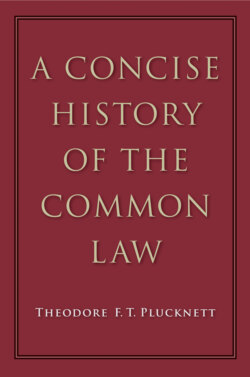Читать книгу A Concise History of the Common Law - Theodore F. T. Plucknett - Страница 40
На сайте Литреса книга снята с продажи.
EDWARD II AND THE ORDINANCES
ОглавлениеThe troubles which began in the reign of Edward I became chronic under his son, Edward II (1307-1327), and once again an attempt was made by a series of “Ordinances” (1311) to put the Crown under the domination of a group of barons.9 For a time they were successful, but in the end a counter-revolution repealed the Ordinances by the famous Statute of York (1322). This Statute contains the important declaration that matters relating to the estate of the King and the country must be agreed upon by the prelates, earls, barons and commons in parliament. It has been very persuasively argued1 that this statute already shows a feeling that matters which would now be called “constitutional” ought to be reserved for very special deliberation in a parliament which contained commons as well as lords. In any case,
“it is not too much to say that one result of the reign of Edward II was the establishment of the practice of regarding only those parliaments as true parliaments which contained representatives of the commons”.2
